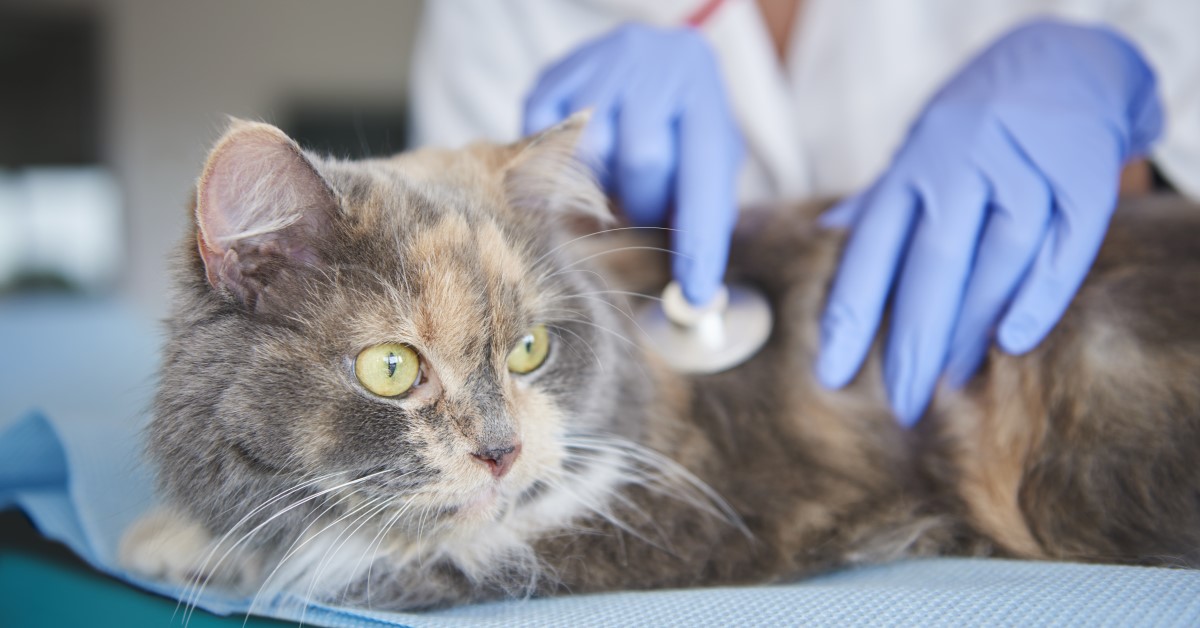National Chip Your Pet Month
National Chip Your Pet is celebrated in May to remind pet owners to have their pets microchipped and to keep their registration information up-to-date.

May is National Chip Your Pet Month, a holiday officially recognized by the American Kennel Club (AKC). Each year, more than 10 million pets are lost in the U.S., according to American Humane, resulting in millions of cats and dogs in animal shelters across the nation.
National Chip Your Pet Month serves as an important reminder to have your pets microchipped to improve the chance of being reunited if your pet should become lost or stolen. Learn more about microchipping, why it’s important, and how the procedure is performed.
What Is Microchipping?
As a pet owner, one of the worst things that can happen is losing a beloved pet. Having your pet microchipped increases your odds of having your pet returned to you. A microchip is a small device approximately the size of a rice grain. The microchip is inserted under the pet’s skin in a quick and simple procedure performed by your vet.
Microchips contain tiny computer chips that hold information, such as the owner’s name, address, and phone number. If your pet should become lost, a handheld scanner that uses radiofrequency can activate the chip, causing the chip to emit a code that is then displayed on the scanner. This code is linked to a microchip company that stores the pet owner’s contact information. The pet owner can then be reached about their lost pet.
It is a common misconception that a microchip allows a pet owner to track their pet’s location. If your pet gets lost, the person who finds your pet needs to take her somewhere to be scanned, such as a veterinary clinic. If your pet is microchipped, the scanner should locate the chip and obtain the owner’s contact information.
Why Should a Pet Be Microchipped?
If your pet wears a collar with an ID tag, you might be thinking that a microchip is unnecessary. While securing an ID tag to your pet’s collar is always a good idea, there is a chance that the ID tag could fall off or become illegible over time. The collar could also break or fall off, leaving your pet collarless. A microchip provides your pet with a permanent backup of identification.
Another common excuse people use when asked why their pet is not microchipped is that the pet “never runs off” or “always comes when called.” While training your pet to not run off and come when called is also a great idea, pets can also make mistakes and may wander too far. If your pet digs under the fence in the backyard or chases a squirrel into the woods, it may be difficult to find her again if she becomes lost.
Microchipping is typically a one-time expense that is well worth the money. Microchips can last as long as 25 years, which is longer than the lifespan of most pets. Installing a microchip takes just a few seconds and your pet shouldn’t feel more than a slight pinch. There is usually no lingering discomfort after the procedure. In addition, most microchip databases are national, meaning your dog can be found even if it crosses state lines.
How Is Microchipping Performed?
The microchipping process is fairly straightforward and involves just a few simple steps.
- Your vet will first scan your pet to ensure that there is not already a microchip implanted.
- The packaged syringe used to insert the microchip is then scanned to confirm that the barcode label matches the ID number on the microchip.
- The vet will find the injection site. For dogs and cats, it is between the shoulder blades. The needle containing the microchip is then inserted into the skin.
- The implantation site will be checked to ensure that the microchip has been fully inserted.
- Your vet will scan your pet to confirm that the microchip is working properly. It is best to keep your pet calm for 24 hours post-procedure.
How Much Does Microchipping Cost?
The cost to microchip a pet can vary by location, veterinary clinic, and manufacturer of the microchip. However, the average cost of microchipping is between $25 and $60.
The procedure is most commonly performed in a veterinary office but can also be done at chipping clinics and some pet supply stores. Some kennels will microchip their pets before adopting them out.
The registration fee is often included in the cost of the microchipping procedure; however, you may be charged an additional registration fee. This charge is usually no more than $20 and is used to list your contact information in the pet recovery database.
Does Microchipping Have Side Effects?
While there is always a chance that side effects could occur with any procedure, side effects of microchipping are rare. Microchips are more likely to fail when modern scanners are used with older microchip models. However, with the introduction of new universal scanners that can read nearly any radiofrequency, there is little room for error.
According to PetMD, microchipping your cat or dog is one of the safest and most commonly performed procedures that your pet can receive. In the majority of cases, the benefits of microchipping far outweigh the risks.
Get Your Pet Microchipped Today
Maintaining up-to-date microchips drastically increases your chances of finding a lost or stolen pet. In honor of National Chip Your Pet Month in May, consider contacting your vet to schedule a microchipping for your cat or dog.
Ready to start saving money on pet wellness care?
Then take a look at Mint Wellness, the pet wellness plan that provides fast reimbursement on routine pet care. Save on vaccinations, wellness exams, preventatives, dental, and more!
Learn More


